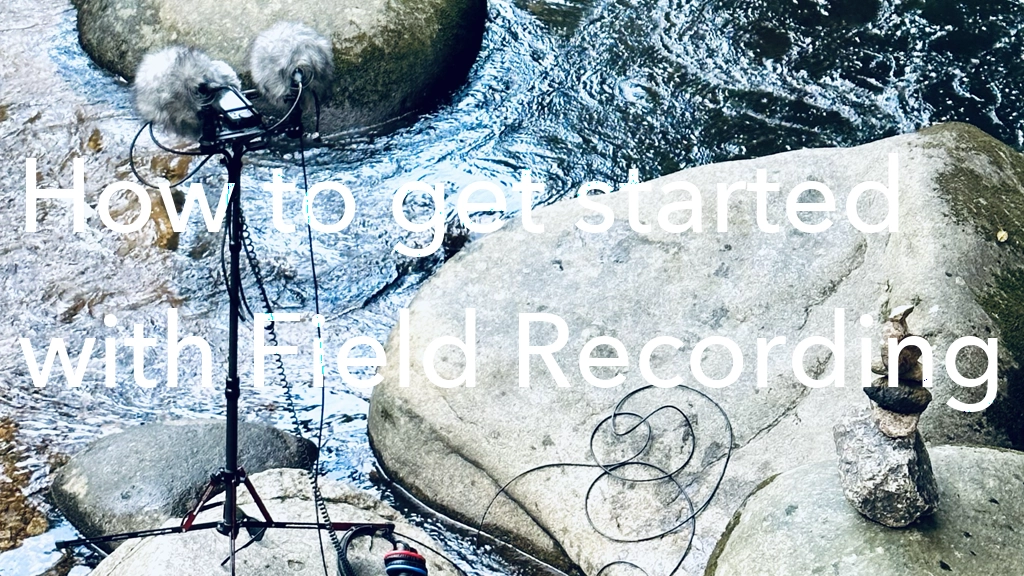Date:2023-09-14
How to get started with Field Recording. barbe_generative_diary SOUNDS
In recent years, you have probably heard the term “field recording” used more and more often. In this article, we have written this article as information for beginners as a starting point for those interested in field recording. Getting Started with Field Recording

barbe_generative_diary SOUNDS
I’m not a sound engineer or musician, and I’ve never worked in post-production. I had zero knowledge about the sound when I started Field recording.
I started it as a way to collect sound material to create experimental code art called “Sound visualization”. I am self-taught in sound recording and create experimental art.
How to get started with Field Recording.
I feel like I’ve been hearing the term “Field recording” more and more in recent years.
In this article, I will answer questions such as
“What is field recording?” and “I want to try field recording, but I don’t know where to start.”
- Index
What is “Field recording”?
Why record sounds instead of taking pictures?
Get started with field recording.
Gear Needed for Field Recording
What is “Field recording”?
Generally, when people hear the term “field recording,” they imagine scenes recorded in nature, such as forests and rivers. In addition, artificial places where people gather, such as towns, train stations, and airports, are also subject to field recording. The term “field recording” here refers to any recording other than a fully controlled studio recording.
Field recordings are made through microphones to record the echoes of space and the passage of time. Auditory observation of the recorded sounds reminds us that we live among many sounds.

Why record sounds instead of taking pictures?
Now that everyone can take pictures with their smartphones, many people take pictures to record themselves without showing them to anyone. However, I have not seen many people recording sound in the same way.
I think the appeal of recording lies in its ambiguity. Normally, we obtain 80% of our perceptual information from sight and about 10% from hearing. Recordings are not as clear as photographs, but the unique ambiguity of recordings allows us to experience new sensations that change over time and to connect them to our own experiences and memories.

Get started with field recording.
A quick way to experience field recording is to use a recording function application (voice memo) on your smartphone. When recorded through a microphone, the sound of the surroundings is recorded evenly, giving a different impression than what we normally hear with our ears. This is because our ears are very sophisticated and have a natural mechanism to focus our hearing on an object in order to hear the sound we want to hear. This is the so-called cocktail party effect.
When we pass a microphone, this effect is lost and everything is recorded uniformly. On playback, our ears hear more sounds than they would hear live.
Gear Needed for Field Recording
General Field Recording Equipment:
- Recorder (to record sound)
- Microphone (to collect sound)
- Headphones (for monitoring)
- Cables (to connect the microphone to the recorder)
- Microphone stand
- Wind protector (to reduce microphone noise caused by wind)
Although high-quality recording requires a certain amount of equipment, beginners can start field recording with a handheld recorder, which integrates a microphone and recorder. Handheld recorders are a favorite of many field recordists because they require no setup, can be taken right out of the bag, and record easily.
If you are not sure which handheld recorder to buy, there are
・ZOOM H1n
It is popular for its high-quality recording with a full-fledged XY stereo microphone, compact size, and ease of use.
・TASCAM DR-05X
This is a popular handy recorder that is compact.
・TASCAM Portacapture X8 or X6
A handy recorder that supports touch panel operation and 32-bit float recording. I personally use his X8 for field recording.

barbe_generative_diary SOUNDS
barbe_generative_diary SOUNDS publishes sound materials recorded through field recordings for sound visualization expressions on “bandcamp” royalty-free.


